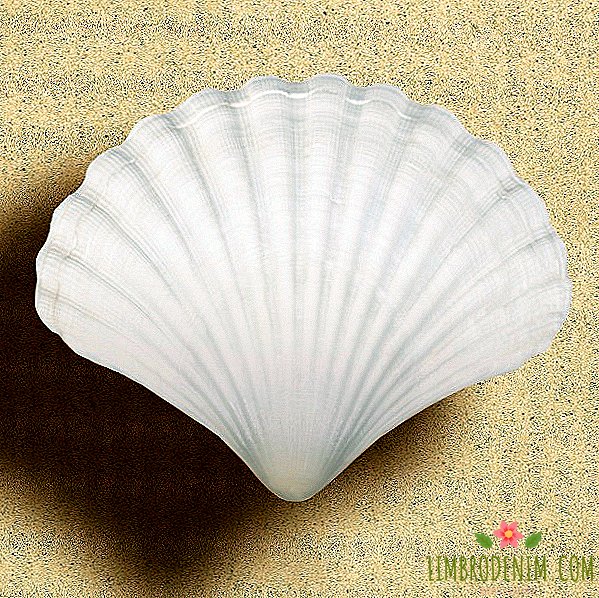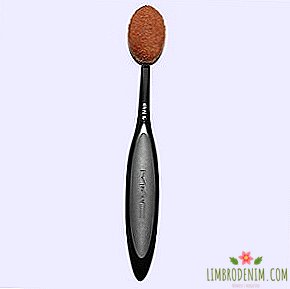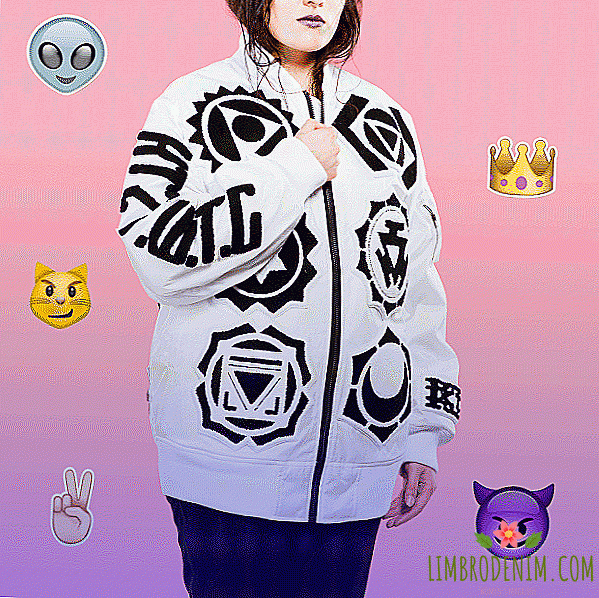Buy an elephant: How marketers cheat our brains
PRODUCT PLACEMENT, VIRAL ROLLERS AND DIRECT ADVERTISEMENT- this is not all means that use to sell goods to consumers. Human consciousness is much easier to manage not directly with the help of slogans, but through the subconscious mind, which marketers invade through the senses. Sight, sensation from touch and especially smell give us enough information which we do not realize, but nevertheless we process - and we draw conclusions to which we are skillfully pushed.
Vision

Primates (and humans among them) distinguish more colors than other mammals. It is assumed that initially it was necessary for monkeys to quickly find food - fruits and berries. Products and services are the same food, which means that if they are colored, they will be easier to notice. The same applies to advertising texts. Visitors to American stores of clothing, food and fast food restaurants at the checkout were issued checks with the text printed on them about some other store or foreign goods. In half the cases, the advertisement, like the main information on the check, was black and white, in half - color. Buyers looked at their check for three seconds, after which they were asked if they noticed an advertising message.
If the text of this message was black and white, 31% of the respondents managed to pay attention to it in three seconds. 82% of the participants noticed colored inscriptions at the same time. But do you often look at such papers in the store for a long time? On the question of whether buyers want to return to a particular store, recipients of black and white checks responded affirmatively only in a quarter of cases, while among owners of color checks who want to call again it turned out two thirds.
The design of a website or an advertising poster can be as beautiful as you like, but those who really want to attract customers should consider one more thing. If the arrangement of nice looking elements on the page is not optimal, the product will attract few people.
What is the best location? Specialists in cognitive sciences claim that this can be ascertained by recording eye movements, or eye tracking. The subject sits motionless in a chair and examines a webpage or advertising layout. The infrared camera next to the monitor is aimed at the person in the chair and records the movements of his eyes. Data from the camera is processed by a special program. It builds the trajectory along which the subject’s gaze passed, and superimposes it on the picture viewed by the user. Any stop of a look at a specific place on the screen is marked by a circle, and the larger the diameter of such a circle, the more often the user's view falls to that point.
For each advertising layout or site, the hot spots appear in different places, but there are also general patterns. Children and animals most often distract attention to themselves, but this can also be controlled by portraying them in correct postures. As a rule, the subjects look the same way as the people depicted on the posters. For example, if a model looks forward on a shampoo ad, the most looks will be in her eyes, and the product itself will be left out.
In addition to bright pictures and colorful pages, you can analyze text and tables using eye tracking. By the way, Russian scientists are engaged in this. Most studies show that people rarely read advertising leaflets to the last lines. So the introductory part of the text is really the most important part of it for the reader.
Substitution of concepts

You suddenly began to fit things of size S instead of the usual M? Do not rush to be surprised - this does not necessarily mean that your body has changed: perhaps marketers have hooked you. Clothing sizes on labels can consciously reduce, playing along with the desire for thinness imposed on us. As a result, when a woman comes to the store and discovers that she is suddenly closer to the “ideal” than she expected, her mood and self-esteem increase. As a result, the brand of “lying for the good” brand is associated with a pleasant one, so she likes it more, and the customer comes after her again and again.
Manufacturers of fast food do not lag behind in ingenuity. Only they move in the other direction: they increase the serving size, leaving the former name. The standard portion of french fries over the past 40 years has doubled in weight. Considering that along with the mass of the portion, its price has also grown, consumers have unwittingly eaten more (and sellers have more to receive). Confirmation of this, at least in the United States, is a common problem with metabolism and excessive weight gain, which the American Medical Association recognized as a disease in 2013.
Sense of smell

Although we receive the most information from the organs of sight, smell has one indisputable advantage over all other senses. Information about odors goes almost directly to the cerebral cortex, as well as to the structures under it, which are responsible for a variety of emotions and memory: the amygdala and the hippocampus. Therefore, we remember the situation of childhood only in general terms, but the smell of grandmother's jam or a favorite book in the country house remains unchanged with us until old age. In addition to the nostalgic moments of the past, smells will help to keep in mind the images of specific products - those that marketers want to present to us.
Two types of odors can be used: the general smell of the environment in which the purchase takes place, and the smell of the product itself. Using the example of paper napkins and simple pencils, American scientists have shown that in the first and second cases, consumers remember the goods better. However, the aroma of the room does not give such a pronounced effect as the smell of the product itself. If the goods had a smell (this also applies to those things that usually do not smell), the subjects remembered well their brand and appearance even two weeks after the experiment.
When consumers come to the store, they often choose exclusive expensive goods, they need to inspire them with a subconscious desire for power - not forever, but for just a few minutes. More recently, American marketers have figured out that for this, a “warm” fragrance should hover at the point of sale. "Cold" smells give the opposite effect.
Multisensory perception

THE PROBLEM ABOUT THAT THERE IS A HEAVY DUTY-KILOGRAM OF THE GUN OR KILOGRAM OF THE IRON, although it seems silly at first glance, it actually reflects one important feature of our perception. Sight, hearing, smell, touch and taste are not divorced from each other. Information from the eyes affects how our fingers feel, and smells are associated with specific visual images. All this is called one common term "multi-sensory perception." There is also multi-touch marketing - the study of how certain product characteristics affect the perception of its other properties.
In 2010, the University of Michigan conducted the following experiment: twelve students were given a sniff and touch of paper samples of different texture, but of the same density, impregnated with 14 different smells. Prior to this, independent experts evaluated the texture of paper sheets and smells separately on the scales of masculinity / femininity. Soft paper was associated with femininity, more rough - with a male beginning. In the experiment itself, part of the sheets had a "male" texture and a "female" flavor, some - on the contrary, and in some samples the modality of smell and texture were the same.
Participants were asked how pleasant a paper sample felt to them. Students in the mass gave the highest marks to sheets with a rough texture and a manly smell, as well as soft paper and a feminine smell. Such samples did not cause cognitive dissonance.
Taste is a feeling close to the sense of smell, and its perception also depends on the accompanying data from the organs of touch. However, experiments show that the texture of the product is not always reflected in the perception of taste, but mainly if the consumer is a person who is not very focused or curious. A study of this relationship was conducted at the University of Michigan. Each of the two hundred participants in the experiment was given a clear plastic cup with mineral water. At half this cup was thin and fragile to the touch, and in half - dense and hard. Volunteers were asked to take a few sips through a straw and write down everything they think about the quality of the drink and the convenience of a glass. The participants were told that they were trying out new mineral water, which one of the airlines wants to sell on its flights. The experimenters noted that the water would be paid on purpose to evoke negative thoughts about it.
Those subjects who in the preliminary survey showed themselves to be not completely targeted, considered the water bad and tasteless if they drank it from a thin fragile cup. The rest of the mineral water seemed about the same regardless of the capacity in which it was poured.
Tongue

A few years ago, in Russia, decoding of English words appeared on the packages of goods of foreign companies. Sometimes they look ridiculous, for example, if the word "stop" is marked with a footnote and written below as "stop". The vast majority of buyers do not need any explanation in this case. Nevertheless, it makes sense to translate phrases on the package into the native language of buyers, even for bilinguals, who know the two languages equally well.
In 2008, marketers surveyed Hindi and English-speaking bilinguals, how they rated various advertising posters, and what characteristics the subjects attributed to a product that is advertised. Samples included internationally renowned corporations and local firms. Posters advertised and consumer goods, and valuable expensive brands. Opinions were divided: advertising in Hindi was associated with friends and a family hearth, and posters in English - with the urban atmosphere and life of a higher class. Thus, scientists say, large corporations selling shampoo and cigarettes should translate ads and labels on packages into the official language of the country of sale. But billboards, lauding jewelry and expensive equipment - is not necessary.
PHOTO: AHAlife, Polyvore, Shutterstock, Miss Patisserie, NPW, AliExpress
The material was first published on the site Look At Me




